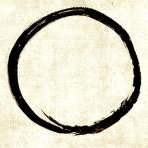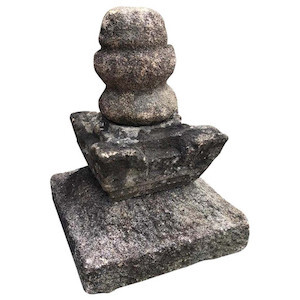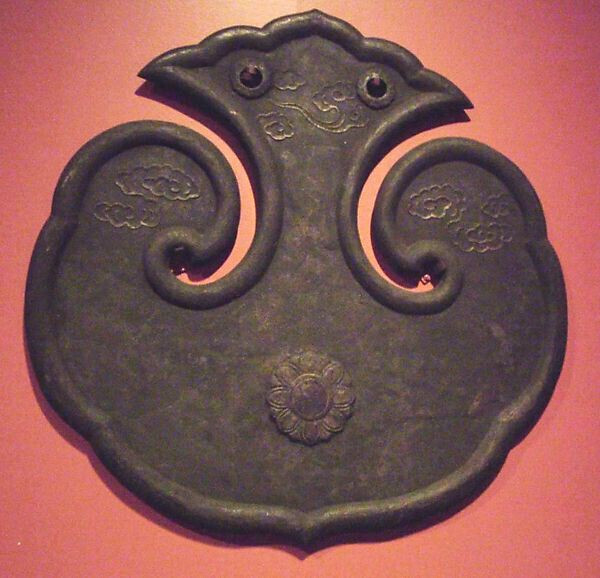-
Posts
407 -
Joined
-
Last visited
-
Days Won
1
Content Type
Profiles
Forums
Events
Store
Downloads
Gallery
Everything posted by FlorianB
-
The noted tapering at the edge is typical for later Tosho-style works, the circle is too exact and the carving on the butterfly is unusual for old examples, so my gut feeling tends to a later reminiscence from Edo. However an impressive work. I like it. Florian
-
Hello Greve (?), on the first sight it seems to be an interesting Tsuba, well done with elegant curves in orikaeshi mimi. I like it. I don’t think, the corners depict Mount Fuji (there should be three peaks). I would describe it as a variation of itomaki-gata. The indentation could be called sumi-iri. Concerning the manji- or sawastika-mon no apologies needed - we all know the meaning of it in Japan. If the mon refer to specific families or if they are just decoration I can’t tell, but in my opinion these inlays have a kind of crudeness in workmanship. Perhaps later additions? Best, Florian
-
concerning item 222: A friend of mine owns a nearly identical one, the paper says „akikusa suzumushi“ - autumn grasses and cricket. The jagged parts seem to be simplified panicles like those: Best, Florian
-
Glen, that was my first thought, too, some kind of Japanese humour. At least it could be an allusion to military strategy, overcoming obstacles - something like that. Florian
-
Stirrups or abumi as Glen mentioned, a ladder and perhaps a gaming board for shogi or go. But no idea what this compilation represents. Best, Florian
-
That’s up to you. Japanese art aims at a subjective perception, so the depicted is just an impetus for deeper understanding. Florian
-
Sorry to be a drag, but I’m not sure if it is Yatsuhashi at all. We see a collection of various flowers comprising chrysanthemum, bellflower, iris, peony and a trunk with plum (or cherry) buds. I don’t know if there is a special meaning in this ensemble. Perhaps a connection to seasons. The zig-zag line reminds me to several laquer works giving the impression of parts merged together. Like this: In my opinion the tsuba motif needs further study. Best, Florian
-
Or is it the other way round? Florian
-
Gentlemen, please don’t forget that the motif (indeed often shared by different workshops) isn’t in many cases a decisive factor for attribution. Here we are comparing pictures (even of good quality), but it’s completely different to have those pieces in hand and compare the steel/iron, the colour and other details. Best, Florian
-
Here’s one of mine, however I don’t know if “ko“. Of smaller size, but I’m fond of the composition. Florian
-
Sorry, I referred to Tsuba No. 178! Florian
-
Hello Evan, Kanayama design is often very abstract and difficult to interpret - if interpretation is intended at all. Another idea concerning Your guard: these forms could also symbolize a stupa or a gravestone. Best, Florian
-
Concerning Tsuba 147 it looks like umpan 雲版 , temple gongs, arranged like the well known tumbler toys. So an amusing variation of this theme
-
Hello Calimero, to gain more knowledge to this topic there are a lot of websites and books explaining technical terms, however on english. I don’t know if Markus Sesko’s „Handbuch der Schwertzierate betreffenden Fachbegriffe“ is still available on german, if so, try to get and study it. Best, Florian
-
Looks like later Akasaka to me. Beginning with the fourth generation (Tadamune) an influence of Hizen stylistic could be noticed in Akasaka works. However, Hizen made rounded sukashi lines while Akasaka produced sharp angeled sukashi. Florian
-
Those kind of tagane could be found sometimes. I agree they have none or only a small effect in altering the nakago ana. Because of this IMHO it is most probably some kind of signature or perhaps refernce marks for a later modification of the nakago ana. Here’s an example out of Kremers’ book “Sukashi Tsuba”. Although the tanghole has been modified already similar tagane could be noticed. Florian
-
My 50 cents: I would go for Shoami because of the rounded rim (as far as I can guess it) and the kidney shaped openings. There’s a spot on the rim about 8 o’clock, but I can’t decide if it is a tekkotsu or just corrosion. Concerning the large box shaped openings there was a discussion of a similar piece about a year ago: www.militaria.co.za/nmb/topic/32529-cross-shaped-shoami-tsuba/ Much useful information there. Florian
-
Perhaps something which is called “mu imi sukashi” - a sukashi without meaning or a design, which meaning is lost. Interesting piece, any dimensions? Florian
-
The motif points to Nishigaki, Kamiyoshi and Akasaka, even Shoami, but I’m puzzeled by the somewhat sunken bars with the structure on them. Unususal for those. But I remember I’ve seen something similar on a Tosa Myochin Tsuba so I vote for this school. Florian
-
-
Forget about my last remark, didn't read correctly Florian
-
I won't be a nuisance, but I stick to my statement, that - at least on one side - gourds (one of the many symbols meaning luck) are depicted- please compare with this picture: The mentioned roe pattern could hint to a former gilding or silvering. Florian
-
The KOGATANA blades serve as utilitarian knifes and thus the quality isn’t high in many cases. That’s why far more KOZUKA exist instead of KOGATANA. However there are also well forged KOGATANA with authentic signatures by the smiths who made them as a sideline to use up material. I think You will recognize those in the future with Your eyes trained. KOGATANA and KOZUKA don’t belong together inevitably and could be exchanged. Often the tang is modified to fit into another KOZUKA. Sometimes both are offered together to upgrade the attraction of moderate KOZUKA. Of course I agree with Steve to look for better pieces, it will pay off in the long run. BTW many years ago I started with KOZUKA, too, because I was interested in how the artists handle the extreme format. Florian
-
Hello Johan, these emblems are called KAMON or just MON and show the KIRI-motif. KIRI were popular and appear frequently. Yours are different in size so I persume there must be another probably smaller one in the space beside the larger one but fell off. The condition of the KOGAI is not the best either. On the right side gourds, on the left side a flag and a SAIHAI, a commanding baton are shown. Best, Florian















